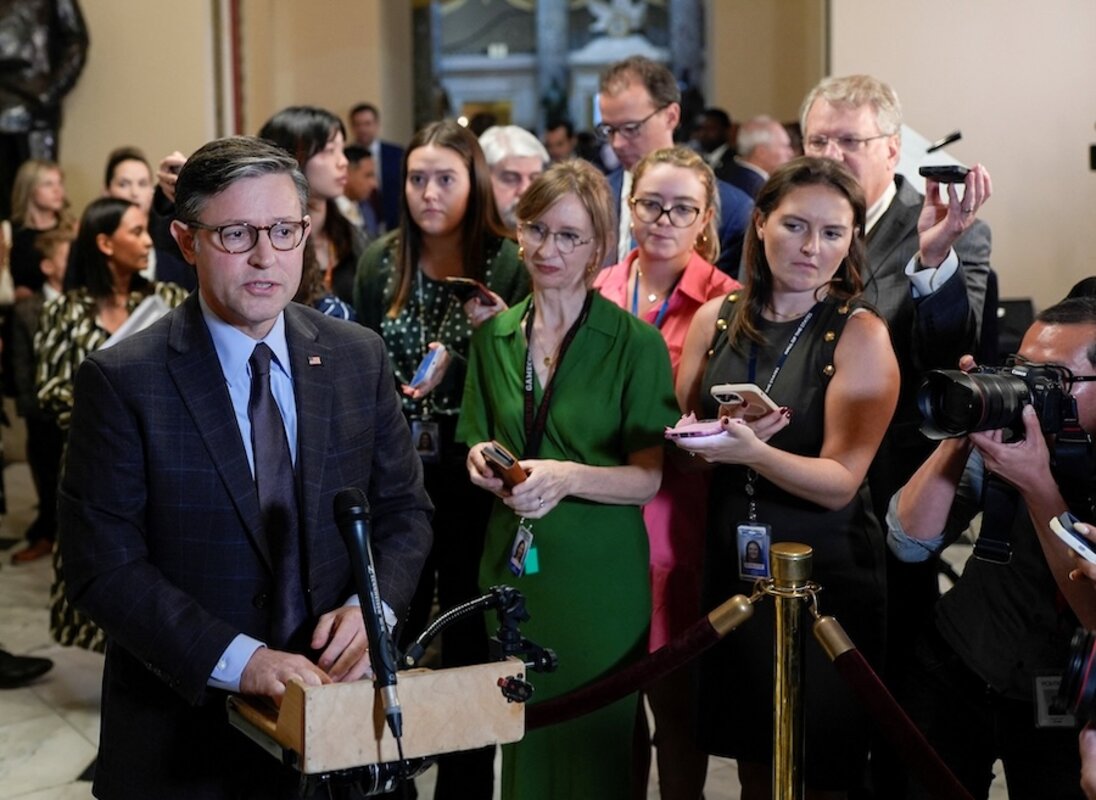Lawmaking that operates ‚Äď quietly
Loading...
It’s fall. Seasonal pumpkin spice-flavored drinks are back. So are political battles over funding and a potential United States government shutdown.
A stopgap spending bill from the House failed to pass in the Senate on Friday, and an alternative proposed by Senate Democrats also did not pass.
But with all eyes on the shutdown showdown, it‚Äôs easy to overlook the full array of legislation that does make it through Congress. In the 2023‚Äď2024 legislative session, for example, 614 bills were enacted and 735 resolutions were passed, according to the accountability website GovTrack.
The American public hears about contentious bills but may not ‚Äúget a big picture of what all Congress is doing,‚ÄĚ according to University of Virgina public policy professor Craig Volden.
‚ÄúHundreds of bills become law, most of them behind the scenes and most of them with broad support from both Democrats and Republicans,‚ÄĚ he said when presenting research by the Center for Effective Lawmaking on a previous session of Congress.
Another report by the center on Congress‚Äôs 2023‚Äď2024 session noted that ‚Äúlegislators were able to find ways to get their initiatives passed into law ... despite widespread public perception of gridlock.‚ÄĚ
Indicators of lawmaking at work are in evidence well beyond Washington.
In 2025, state legislatures introduced more than 135,000 bills, says the news site Governing. These were passed at higher rates than at the federal level ‚Äď ranging from 12% (New York) to 73.5% (Colorado). This busy roster is partly driven by the need to address fiscal shortfalls from July‚Äôs One Big Beautiful Bill Act (which critics dub ‚Äúugly‚ÄĚ). States are also taking the lead on regulating artificial intelligence and data privacy. And microplastics and ‚Äúforever chemicals‚ÄĚ have been regulated by both Democratic and Republican state legislators.
Overseeing some $2 trillion a year in spending, ‚ÄúThey have a far greater impact on the life of ordinary citizens than Congress,‚ÄĚ as Tim Storey, CEO of the National Conference of State Legislatures, told The New York Times.
While states where one party controls the governorship and both chambers of the legislature tend to arrive at quick, often partisan, decisions, those with split control are obliged to negotiate and compromise.
‚ÄúEffective lawmaking takes hard work, policy expertise, and a willingness to seek out coalition partners, often across party lines,‚ÄĚ Dr. Volden said earlier this year. And, even in this hyperpartisan time, legislators are finding ways to ‚Äúaddress public policy needs during difficult circumstances. Their work is to be commended,‚ÄĚ he said.




